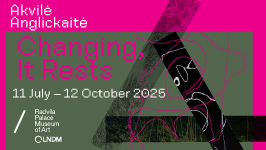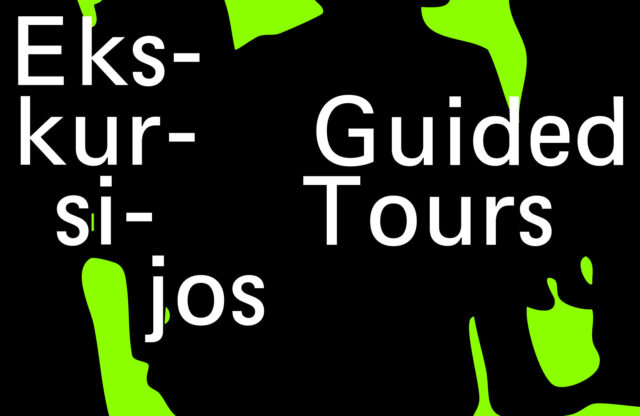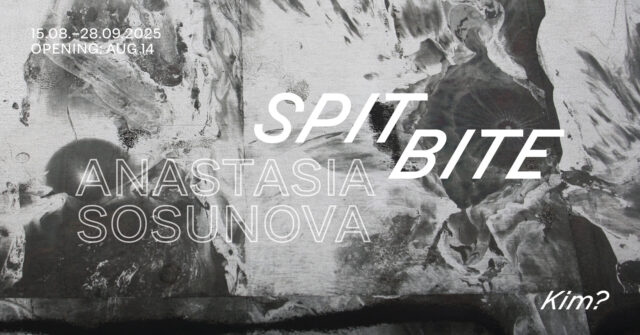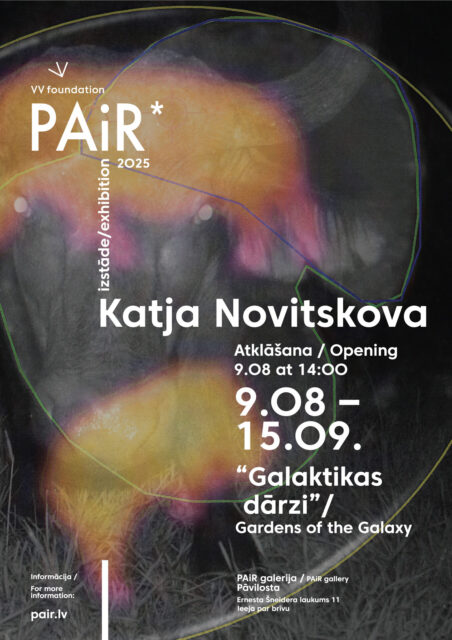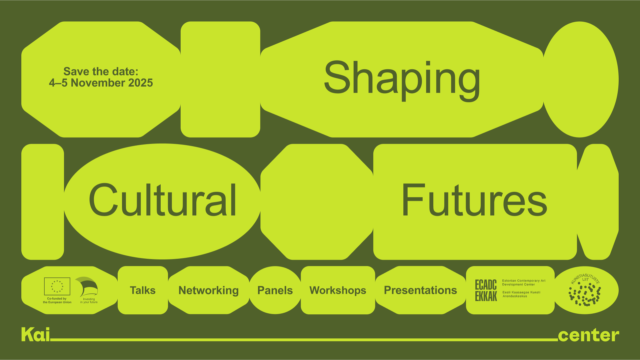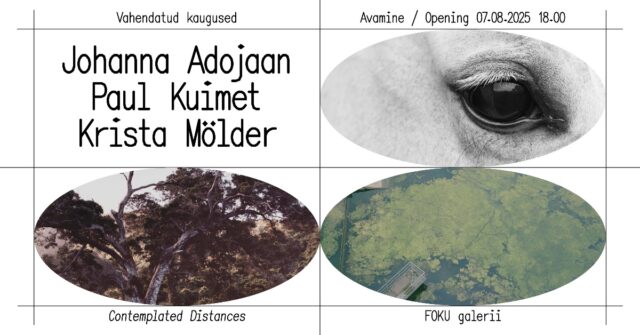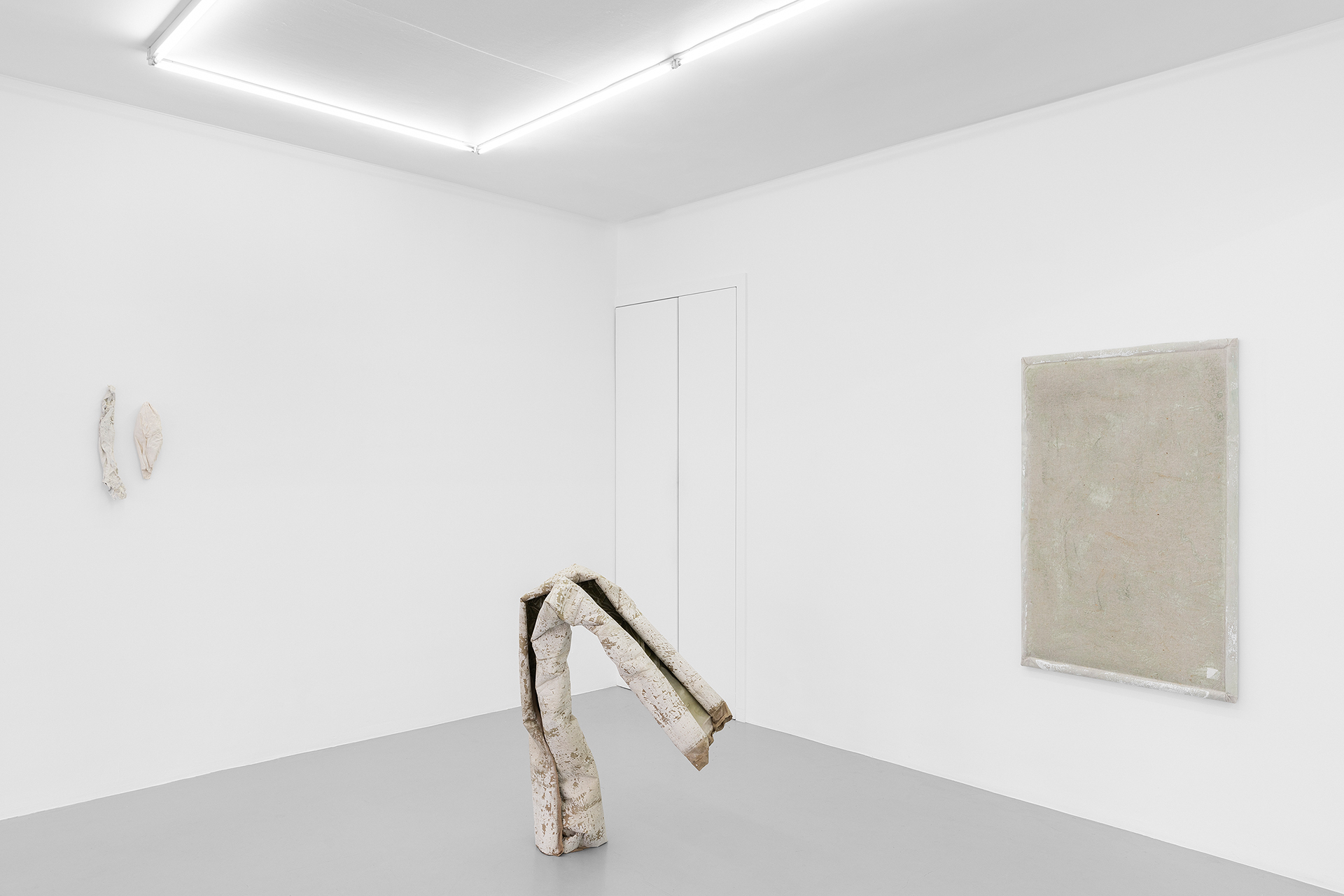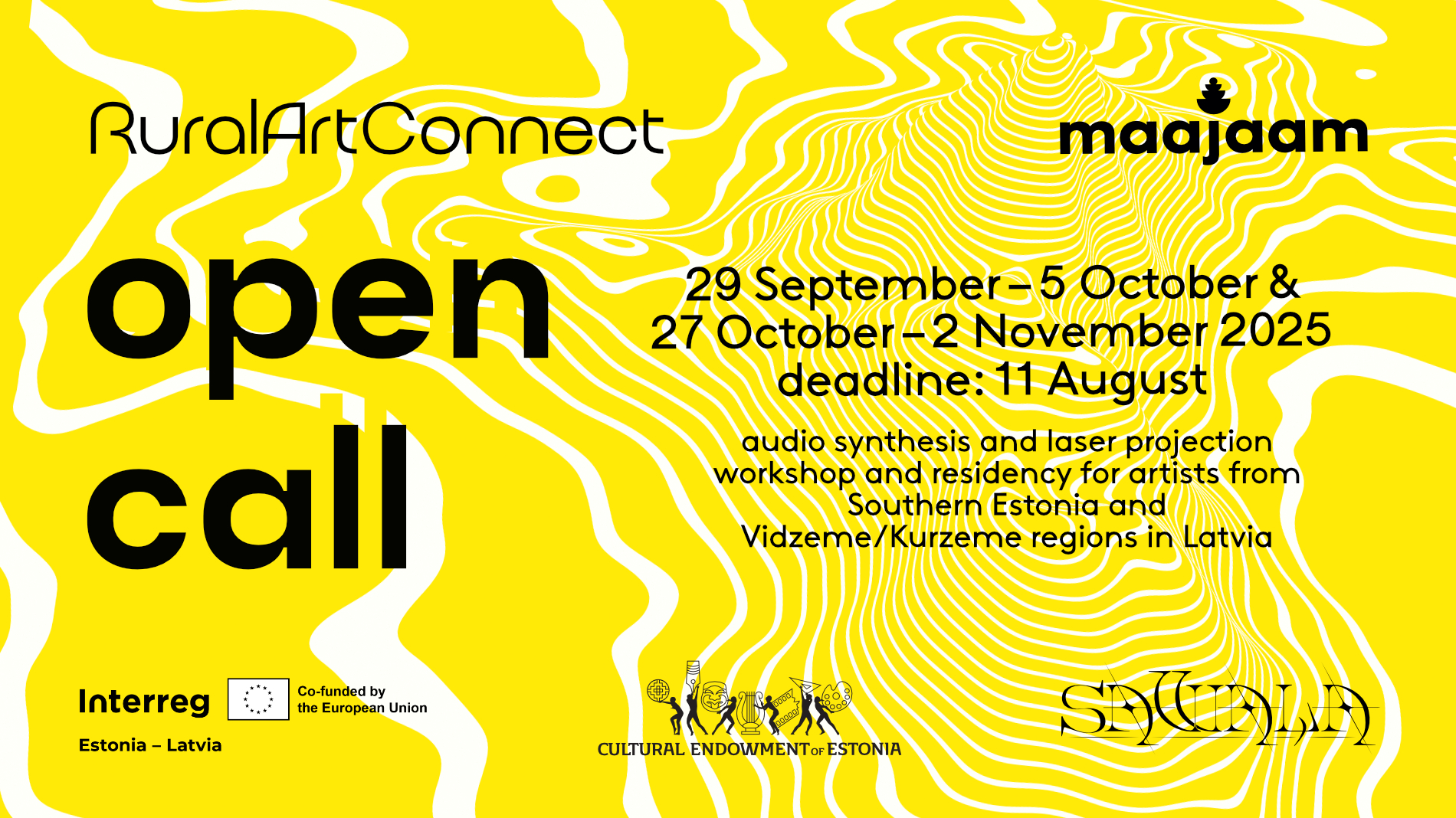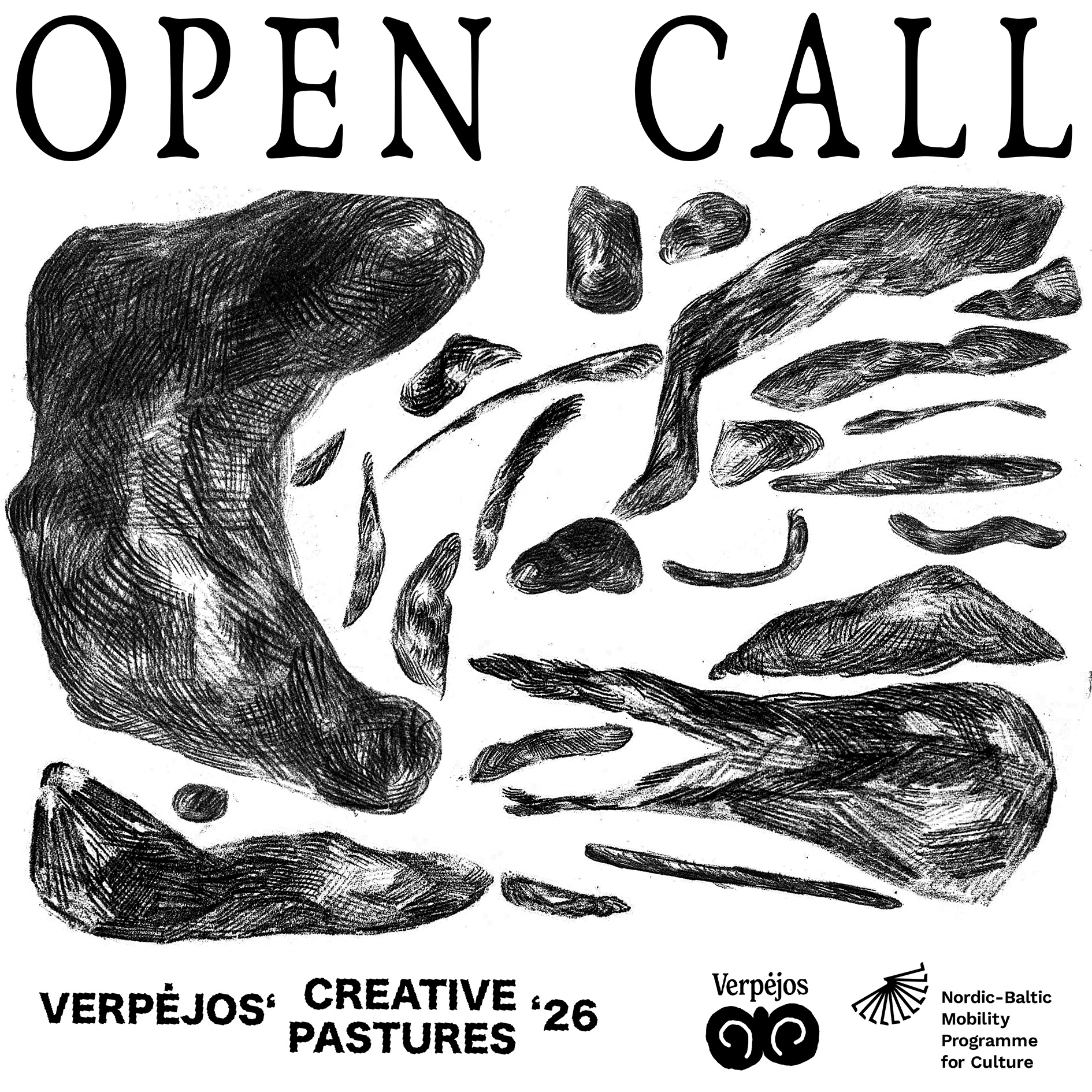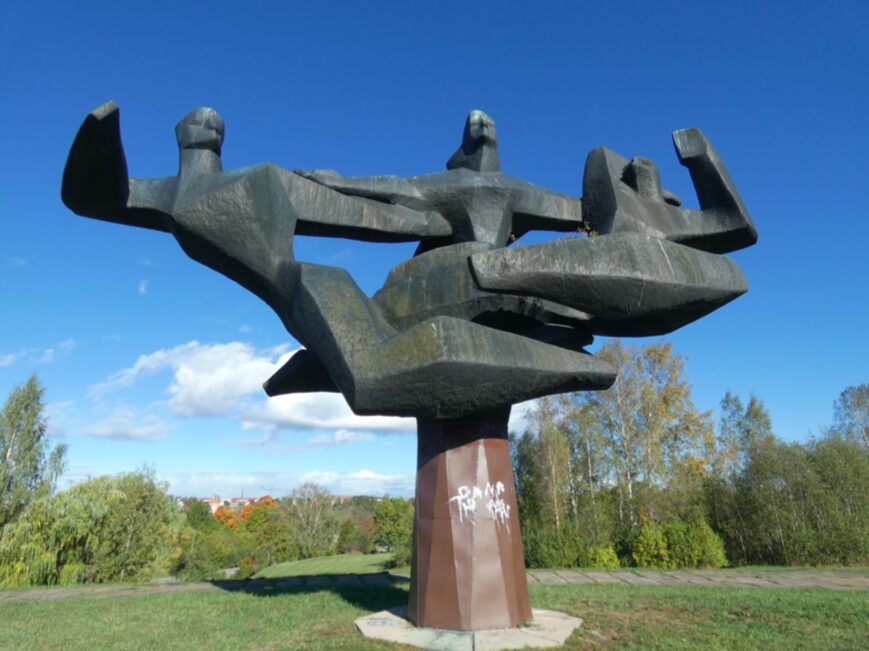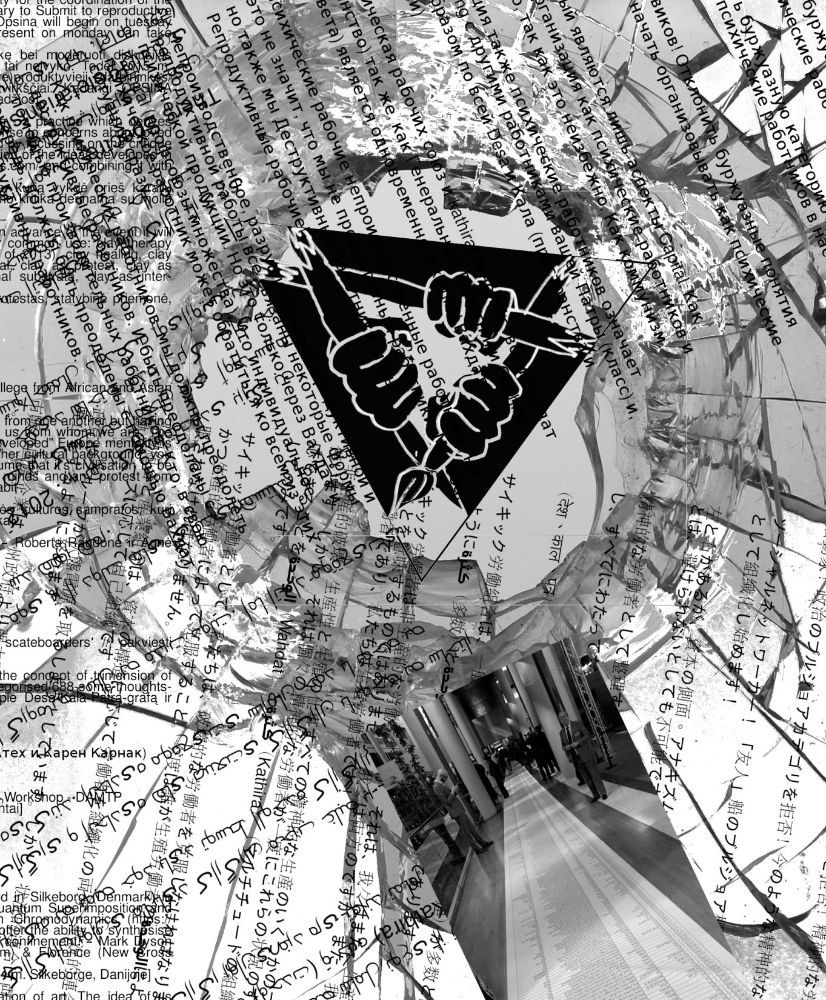
Collective Situography for DAMTP newspaper 11th edition, 2015
„But as anyone knows, like living reality, culture is what is left when all that has been understood has been forgotten.“((Asger Jorn. „Open Creation and Its Enemies“, http://www.cddc.vt.edu/sionline/si/open1.html))
Jorn actually never used the word Eurocentric, but his theories reveal clearly what it is all about. Particularly he was talking about how Roman (fascist) way of thinking stands in contrast to other traditions of European thought, such as Scandinavian and Byzantine. In “Mind and Sense” he describes the differences between those traditions and defines their principles of union: Roman principle [of union] … is based on the fact that „fasces or bundle of mutually independent units are only tied together by another element which forms a strong ring that can be untied and knotted again“.((Asger Jorn. “Mind and Sense”. http://scansitu.antipool.org/6403.html)) That leads towards the absolute priority given to the concept—the action and image are the results of a verbal statement. This was one of sharpest angles of Jorn’s investigation which gave an answer to the basic disagreements between French and Nordic branches of the Situationist International. However, Jorn did not evaluate the imperialist and colonialist dimensions of particularly French version of Cartesian thought and treated it as complementary to other ways of thinking. So the result is that all Jorn’s activities are homogenised according to the Roman form of conceptual verbalization which in fact neutralizes Jorn‘s whole project. The main task of this article is to highlight some aspects of Jorn‘s thought which today could be of greatest importance to all the counter-Eurocentric movements in their continuing fight against an ongoing colonization of people’s minds—particularly those in the geographical South and East.
Despite the Eurocentric ambitions of intellectuals in the Baltic States, their geographical alignment corresponds with the front of colonization directed towards the East. Even a brief survey of the mind production processes in those states will reveal the mindset is predominantly of a Western set: the educational school system is identical to the French colonialist system applied in Northern Africa; academic discourses are based on Western authors and concepts; cultural system is either mimicking Western fashions, or “resisting” them by sticking to the nationalist concepts of “identity” that are grounded in the same Eurocentric ideals. Moreover, it goes without saying that their ideological, political, economical, and financial systems are fully integrated. Even the Marxist critique of capitalism is arranged according to a fully Eurocentric structure with the theoretical polarity between the French politics, British economy, and German ideology. And this is all there is to how we understand of “civilization”. Here and now I find it reasonable to refuse Eurocentrism its status of a sacred cow and discuss its critique which, besides taking on the colonialist issues, deals with the ruling class ideology as well. I found Asger Jorn’s case to be a case in point so far as he raised the questions ranging from the position of the mind- [or psychic-] worker (i.e. a proletarian position which he never recognized((Situationist Worker. The End of the Age of Divinity (On the Death of Isou); http://antisystemic.org/SW/TheEndOfTheAgeOfDivinity-Enkutatach409.pdf : “Elsewhere in his answer to Marx’s Capital, The Critique of Political Economy Jorn identifies the surplus value of the working class as the source of its revolt against capital in what he termed as its propensity to take ‘risk’. This surplus value however, this risk, was to be historically transformed in line with 4th factor of production – and the unification or management of the other factors, namely labour, land and capital – as enterprise. In this way it was just the same as the classical Lettrist movements privileging of the creator – the innovator – the taker of risk, which today we identify in all sorts of ‘revolutionary’ projects undertaken by nothing other than bourgeois enterprise. We therefore must return both Jorn and Isou to the perspective of communism.” )) )—the one who creates meaning by physically accessing the recourses and finding the ways for altering the modes of thinking. As I already mentioned earlier, there are a lot of Jorn’s interpretations that tend to recuperate him back into the system he criticized, but as a situationist he did invented some mechanisms that still refuse to be systematized. The questions I want to pose here are the following ones: does the criticizing of the system has any effect when we use the terms, language, logic of the very same system, and when all access to the resources is lost? What is the role of this kind of critique? How does it happen that ideology of the ruling class became so inherent to the everyday modes of thinking? What are the resources in a psychic work? How we can control what we [psychic workers] produce? How we can overcome the alienation caused by the capitalist mode of production? And so on…
Jorn‘s Triolectics Against Eurocentric Dualisms
Starting with metaphysics and all the way up to dialectics, European thought is based on endless attempts to unify the binary oppositions by producing their syntheses, which produce other dualities in their own right. Here is how Jorn describes his invention of triolectics—the particular formula of a three-sided logic adopted from a French mathematician Henry Poincaré:
„It is like a football match where both sides are trying to win. However, lets us now imagine a whole new type of football field, where instead of two teams and two goals, there are three teems and three goals. Now what would happen when the three teams began to play against each other? It would swiftly be discovered that it is impossible to control which of the two attacking enemies had scored. It would become necessary to invert the rules so that the victory was a negative one, so that it was the team that has defended itself best and had let the least goals that was the victor. The victory becomes defensive and not offensive. The game would of course adjust itself accordingly. It would not be exciting game at all. This is how the third power can neutralize a tension between two powers. Therefore two-sided opponents are always aggressive whilst three-sided ones are defensive. Whether this in itself describes the transition from dialectics to complementarity.“((Asger Jorn. The Natural Order and Other Texts. Ashgate, 2012, p.29.))
However Jorn confessed that he did not believe that it is possible for people to alter their mode of thinking so that they could play that kind of football. But in early 80-ies London Psychogeografical Association revitalized the idea of a three sided football as an anarchist activity. Jorn was partly right while saying that people will not cease to strive for heroism established in the bipolar scenario, but he could have done a better work in explaining that triolectics is not only about defence. It is about continuous change of the conflicting polarizations, with the final realisation that none of them is essential. Even the final goal—to win—is secondary compared to the set of unpredictable situations that occur during the game. What actually happens is a shift from a belief system (constructed in a Cartesian mode of intertwining the progressive rationality of objectivism and the social-scientific reification with romanticist idealism) to a knowledge-generating situation. There are no “objective” observers who, by remaining within the situation, would be able to present themselves as the creators of meaning. The meaning is rather created by players themselves through their own actions. The situation ceases to be spectacular, but it can be described in the terms of class consciousness: working people create their own values in order to create a shared evaluation of their own activity. Also this situation clearly correlates superimposes with the animist approaches of the indigenous (as opposed to the colonized) people—they stress who is acting instead of what is the cause. They emphasize interdependence, influence, mutuality, responsibility, and respect (or the lack of it).(( Contemporary anthropology accepts the new non-Cartesian modes of approach and evidently detaches from the openly racist positions of such classical anthropologists like James George Fraser and Edward Taylor: Kenneth M. Morrison „Animism and a proposal for a post-Cartesian anthropology“ in The Hanbook for Contemporary Animism, edited by Graham Harvey, Acumen, 2013, p. 48-50.))
So the principles of a triolectical football lead to a new mode of thinking. Instead of analyzing the truth through its dualist relation with reality as the classical European thought does, Jorn offers the inclusion of a third element—e.g., imagination——in order to stress the confrontation and create a triolectical structure. The third element creates three possible alliances and therefore three possible confrontations. So the synthesis of truth and reality creates what Western thought has labelled “objectivism” which, in other words, results in a situation when tradition as a temporary unit confronts imagination or “subjectivity”. Another possible synthesis could be between truth and imagination—this could be called form or magic, and this synthesis creates a confrontation with reality. The third alliance in this triolectical situation appears when the fusion of reality and imagination results in the appearance of clarity or, to put it simply, an abstraction (religion, capital or other utopias) as opposition to truth.
Jorn Against the Scientific Method
What inspired Jorn to become interested in the critique of classical approaches of both European science and Cartesian logic was the so-called Niels Bohr’s Copenhagen Interpretation (1927). The latter was elaborated together with Werner Heisenberg and it dealt with the notion of complementarity which is one of the fundamental ideas in quantum mechanics. It holds that the process of measuring the quantum objects produces the results that depend inherently upon the type of a measuring device that is used, and therefore they must necessarily be described in the terms of classical mechanics. Moreover, Jorn claimed that the classical world picture belongs with the classical form of language and will perish with it. Instead of using the language or grammar literally, he focused his attention on the scientific, philosophical and artistic „languages“ and tried to apply the same law of complementarity as borrowed from Bohr‘s quantum mechanics. Meanwhile, Jorn‘s criticism of Bohr was mostly about sticking to the field of scientific language as superior.((Niels Bohr: Reflections on Subject and Object By Paul McEvoy p 291-292: Bohr insisted on using everyday language for physics. He also rejected using a triple value system going for complementarity instead. This also links up with the development of logical empiricism by Neurath. Jorn’s comments may make sense in terms of the “received view” of logical empiricism precisely because this view arose after 1945, after the US hegemony corrupted what was positive about logical empiricism which was basically a Marxist theory that arose from the problems of implementing a planning by the German Workers’ Councils [comment by Fabian Tompsett; R.D.].)) Jorn openly calls the approaches of both Bohr and Einstein the establishment of science as religion of the new times where they themselves become the new authoritarians who dictate the concepts in order for the new projections of beliefs to be established.
There is only the scientific method for the control of answers. This control aims to repeat the question, investigate the answer and see if it is the same as the first one, nothing more. <…> the only concrete thing science really answers is whether a particular combination of question and answer can be repeated. If it can be infinitely repeated, the combination is said to have objective validity, to be a scientific truth. Scientific truth is thus nothing more that the truth of repetition and the criterion for scientific statements about truth is absolute similarity between the so-called objects. <…> scientific research is therefore exclusively research for identical numeric dimensions of quantities, nothing more.((Asger Jorn. The Natural Order and Other Texts. Ashgate, 2012, p.92.))
Regarding the language and its role in the scientific or any other ways of comprehending the world in order to see how it relates to the colonialist power of Western Eurocentrism: Jorn never developed this. The means of physical measurement are tightly related with the means of measuring the mind—the glossaries are mostly generated by the same imperial powers.((This problem runs much deeper: science arises with Francis Bacon et al. as a way of dealing with how capitalism was manifesting itself as a World System (Immanuel Wallerstein). Also John Dee adopts Dante’s approach when he analyses how empire creates a unified system of weights and measures which means that decisions can be made only when the abstracted information is available [comment by Fabian Tompsett; R.D.].)) As a critic of the neo-colonialist approaches Ngugi Wa Tiong’o points out:
“…how we view ourselves, our environment even, is very much dependent on where we stand in relationship to imperialism in its colonial and neo-colonial stages; that if we are to do about our individual and collective doing today, then we have to coldly and consciously look at what imperialism has been doing to us and to our view of ourselves in the universe. Certainly the quest for relevance and for a correct perspective can be understood and be meaningfully resolved within the context of general struggle against imperialism.”((Ngugi Wa Tiong‘o „Decolonizing the mind. The politics of language in African literature“, James Currey/Heineman, 2005, p. 88.))
Jorn did not elaborate this in his theory. It is quite logical that despite the fact that he idealized the experimental nature of art and that wanted to present it as complementary pole to the enrichment of the Eurocentrist science—that have failed very soon after the 70-ies—all the art activities lost their experimental character and turned into conceptual exercises of (self)colonization. Due to Jorn’s position towards imperialism we can say that he does fall victim of Scandinavian nationalism, but his structural logics goes far beyond his concerns of [historical] identity and it already follows from his concepts of situology and situography— the notions I will try to explore further in this text— and it is here that I see the greatest potential of Jorn’s theory today.
What is Spectacle and What is Situationism? The Question of Psychic Resources
By way of developing his critique of the scientific classical thought Asger Jorn turned toward topology. Instead of dealing with the purely “static” states of fixed bodies (or objects) through spatial motion (as in geometry), he turned toward the spatially constant forms observed in time (topology). Comprehension arises not from the sameness of the fixed objects, but from their continuous transformation. There are no objects that are unique, rather it is their transformation which is unique. Jorn established the concept of the situology as the transformative morphology of the unique:“What is needed today is a thought, a philosophy and an art which conforms to what is projected by topology, but this is only realisable on condition that this branch of modern science is returned to its original course: that of “the situ analysis” or situology.”((Asger Jorn „Open Creation and Its Enemies“, http://www.cddc.vt.edu/sionline/si/open1.html))
Today we see that the situological character goes hand in hand with the basic animist concern of avoiding the notion of equality of fixed bodies: all human, non-human and more-then-human beings are different in physicality, but equal in interiority (thinking, sensing). Meanwhile, eurocentrist concern is based on the naturalist (scientific) notion: we are all equal physically, but different by interiority.((Here I use the neo-anthropological classification formulated by Philippe Descola in “Beyond Nature and Culture”in The Hanbook for Contemporary Animism, edited by Graham Harvey, Acumen, 2013, p. 77-91.)) The latter leads to the basic features of Eurocentrism: racism and bourgeois individualism that result in alienation. That was one of the main reasons of changing topology into situology.
We should be particularly thankful to Jorn for his formulation of the basic concept of situationism——i.e., the situation and everything that comes with it. What is meant by “the situ analysis”? And how does this affect the concept itself? If we are taking this concept as a fixed item then we are simply losing sight of the fact that the situation is not a concept, nor even a formulation, but a continuous action. Here Jorn comes very close to the critique of Eurocentrism by enlisting the “[European] history of triolectics”:
Triolectics or the doctrine about the necessity and the sufficiency of three complementary pieces of information to describe what we shall call a situation is nothing new. It goes back to pre-Christian Gnostic ideas that possibly had their origin in Pythagorean principles and which also form the basis of the Christian doctrine of the Trinity maintained as a principle by the Cathars, who where decimated in the 12th century by the Catholics in a series of persecutions <…> In modern democratic society, the Christian doctrine of the Trinity has been replaced by the doctrine of liberty, equality and fraternity, by the doctrine of love, hope and faith…((Asger Jorn. „What is a situation?“ in The Natural Order and Other Texts. Ashgate, 2012, p.87.))
It’s important to note here that in those examples Jorn shows the way how Eurocentrism was fighting the basic traditions of situation-construction by replacing them with mere abstractions that are but fixed concepts addressed to the systems of belief, which was how the metaphysical dualisms were produced.
This is exactly what repression is all about. In comparison to Jorn’s anti-concept of the situation, Debord’s version is based on propaganda and new formulations instead of the situ analysis:
We must everywhere present a revolutionary alternative to the ruling culture; coordinate all the researches which are currently taking place but which lack a comprehensive perspective; and incite, through critiques and propaganda, the most advanced artists and intellectuals of all countries to contact us in view of a collective action. We should declare ourselves ready to renew discussion, on the basis of this program, with those who, having taken part in an earlier phase of our action, are still capable of rejoining with us. We must put forward the slogans of unitary urbanism, experimental behavior, hyper-political propaganda, and the construction of ambiences. The passions have been sufficiently interpreted; the point now is to discover new ones.((Guy Debord. “Report on the Construction of Situations and on the International Situationist Tendency’s Conditions of Organization and Action“, http://www.bopsecrets.org/SI/report.htm .))
If we could see from the in-situ perspective of a triolectical game—, and this could be considered as one of the possible tactics of action in the constantly changing zones of bipolar conflict in the triolectical game—propaganda is what needs to be superceeded (supressed and realized) just as any other capitalist [verbal or vizual] abstraction… together with, to put it globally (and simply), the spectacle itself.
Another key concept of the situationists the spectacle((It is important to note that Guy Debord failed to give a clear description of what are the general features of the spectacle, where it starts and where it fades away.))—revealed itself in Jorn‘s formulation of its alternative—situography:
“The point of departure of situography, or of plastic geometry, must be Situ analysis developed by Poincaré, and pushed in an egalitarian direction under the name topology. But all talk of equalities is openly excluded, if there aren’t at least two elements to equalise. Thus the equivalence teaches us nothing about the unique or the polyvalence of the unique, which is in reality the essential domain of situ analysis, or topology. Our goal is to set a plastic and elementary geometry against egalitarian and Euclidean geometry, and with the help of both to go towards geometry of variables, playful and differential geometry.”((Asger Jorn „Open Creation and Its Enemies“, http://www.cddc.vt.edu/sionline/si/open1.html))
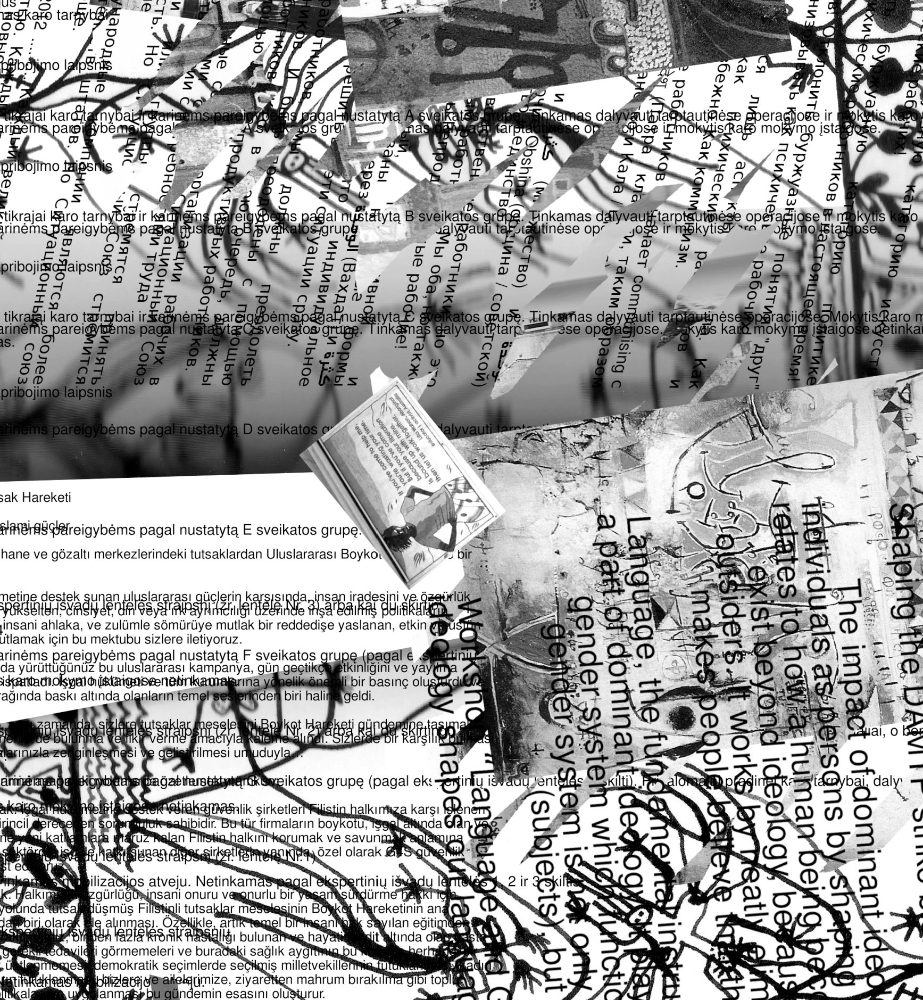
Collective Situography for DAMTP newspaper 11th edition, 2015
In fact, Jorn’s situography goes far beyond Debord’s theorization in a fully Cartesian mode of causal relations. The concept of situography shows the basic features of the spectacle the same way that a fixed object does—it is the two-dimensionality of the fixed-view projection and the bipolarity of Cartesian thought.
There is one more in situ development worth mentioning in relation to Jorn‘s Originality and Magnitude (On the System of Isou)((Asger Jorn. Originaluty and Magnitude (On the Isou‘s System) at http://www.cddc.vt.edu/sionline/si/originality.html)): “The End of the Age of Divinity”, subtitled “On the Death of Isou”.((Situationist Worker. The End of the Age of Divinity (On the Death of Isou); http://antisystemic.org/SW/TheEndOfTheAgeOfDivinity-Enkutatach409.pdf)) In it Situationist Worker develops some of Jorn’s ideas about plastic geometry. Jorn suggests that there may be more dimensions of time:
We can wonder whether time has only a single dimension, or whether in the future we might not be obliged to apply to time at least three dimensions to be able to arrive at more homogenous explanations of what has happened. That remains to be seen. But one thing is certain: time cannot be reduced to a demi-dimension or to an oriented length with a measuring instrument. We thus also reach another question as to whether what we know as time in its scientific definition, as a measure of duration, and the form under which time enters relativity theory, isn’t simply the notion of orientation or a demi-line.((Asger Jorn „Open Creation and Its Enemies“, http://www.cddc.vt.edu/sionline/si/open1.html))
In “The End…” Situationist Worker has done just that—he put forward 3 dimensions of time to go with 3 dimensions of space … and of course the other 3, called Value in “The End…” but which Psychic Workers currently refer to as Class.
What “The End…” also tries to do is to reconcile the spectacle and situation theories through the idea of dimensions and trimensions so that the spectacle would be flattened into 2 dimensions, while the construction of situations requires the new dimensions to be opened up or rediscovered. This is what I mean by “access to the resources.”
Jorn wrote of situography and situology in Open Creation and its Enemies. In “The End…” Situationist Worker writes of “the 6 fold path to corporeality”—the Photic (or graphic), The Phonic, The Fumic, The Linguic, The Pathic and the Logic. This is an indication of why Psychic Workers have now developed the 4 situses that go with Jorn’s situology and situography: phony, linguay, chemy and pathy, and they extended this structure far beyond Jorn’s “humanitarian” limitations:((We should confess that Asger Jorn failed to overcome the supremacist and therefore racist notions of Eurocentrist concept of „humanism“: „Erwin Panofsky states that the word humanitas arises from the setting up of an opposition between man and what is less than man, that is to say, the animal, or between man and what is more, that is to say, the conceptual. These two forms of humanism have led to the two definitions of the human being as homo sapiens and homo faber.“– in Asger Jorn. Neither abstraction nor symbol. http://www.museumjorn.dk/en/text_presentation.asp?AjrDcmntId=455))
Situography is
1. non oriented: no correct way up or fixed viewpoint (land);
2. layered: more than one set of text/images at any one point ;
3. multi trimensional: using trimensions of space, time and class;
4. hypegraphical: using letters/texts from different alphabets;
5. metagraphical: neither abstraction nor symbol.
Situology is
1. psychogeography;
2. quantum superimposition;
3. multi-triolectics: abolition of dualisms;
4. heterogeneity;
5. neither science nor art;
6. [gradual] abolition of units of measure (all Eurocentric terms of greco-latino-franco-anglo-germanic origin included).
Situophony is
1. polyphonic;
2. physically sensual process + access to local resourses;
3. atonal;
4. multi-rithmic;
5. collectively interrelated (non-human and more-then-human persons included).
And this is not a final list—at the moment it features some newly developed concepts such as situolingua, situochemie, situopathy and so on. The list will be expanded no doubt, but not in the sense that we will become more aware about how to use all of our senses, but in the sense thatwe will become aware of the new senses (if that makes sense?). This opens up new perspectives for the real researches in situ, where Cartesian principle„I think therefore I am“ is suppressed and replaced with the animist „I relate therefore I am.“




